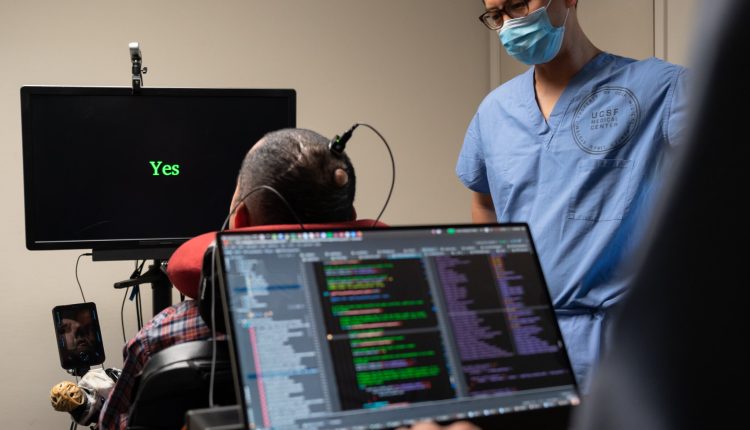Revolutionizing Paralysis Treatment: Brain Implants and AI Unleash Hope
Breaking Barriers in Medicine: The Remarkable Fusion of Brain-Computer Interface and Spinal Implants

In a groundbreaking development, a paraplegic Swiss man has become the first individual to test a cutting-edge technology that harnesses the power of artificial intelligence to restore movement in paralyzed limbs. This innovative treatment combines a brain-computer interface (BCI) with a spinal implant, effectively creating a “digital bridge” that reads the patient’s thoughts and transmits signals through their own nervous system to restore arm, hand, and finger movements.
Previously, this technology had been utilized to enable a paraplegic patient to walk again, a milestone that was prominently featured in the scientific journal Nature back in May. However, this recent achievement marks the inaugural application of the technology for “upper extremity function,” as revealed by Onward, the Dutch company at the forefront of this groundbreaking initiative.
Dr. Jocelyne Bloch, the surgeon responsible for carrying out the implantation procedures, highlighted the complexity of restoring arm mobility compared to walking. She explained that fine musculature and intricate movements involving various small muscles make the restoration of upper limb function a significant challenge.
The anonymous 46-year-old patient, who had lost the use of his arms due to a fall, underwent two surgical procedures at the Lausanne University Hospital in Switzerland to make this incredible advancement possible. The first procedure involved the insertion of a brain implant developed by the French group CEA-Clinatec, which replaced a small piece of cranial bone. The second procedure saw surgeons implant a stimulator, roughly the size of a credit card and developed by Onward, into the patient’s abdomen. This stimulator was then connected through electrodes to the upper part of the patient’s spinal column.
The BCI plays a pivotal role in this cutting-edge technology, as it records brain signals and employs artificial intelligence to interpret the patient’s intentions. These decoded instructions are subsequently transmitted to the spinal cord stimulator, facilitating the restoration of limb movements.
Dr. Bloch, a co-founder of Onward and a consultant for the company, expressed optimism about the progress made so far. “It’s going well so far,” she stated. “We are able to record brain activity, and we know that the stimulation works.” However, she cautioned against premature predictions of the patient’s progress, emphasizing that the training phase was ongoing, with the brain implant learning to recognize various desired movements. The road ahead involves extensive practice to make these movements second nature, a process expected to span several months.
This remarkable clinical trial is set to involve two more patients, with comprehensive results slated for future publication. While spinal cord stimulation has previously succeeded in restoring arm movement for paralyzed patients, the novel approach of pairing it with a brain implant, capable of reading thoughts, adds an unprecedented dimension to the field.
Notably, other research organizations have ventured into the realm of brain implants. The Battelle research organization, for instance, employed a brain implant to restore arm movement in a patient, using a sleeve of electrodes on the forearm to stimulate the necessary muscles from above.
Dave Marver, the CEO of Onward, emphasized the company’s unique focus on restoring movement to individuals with paralysis by stimulating the spinal cord. He suggested that this groundbreaking technology could potentially become commercially available by the end of the decade.
Once relegated to the realm of science fiction, brain implants are rapidly advancing, thanks to pioneering firms like Synchron and Elon Musk’s Neuralink. These developments offer hope to countless individuals living with paralysis, promising a brighter future where mobility is no longer beyond reach.
